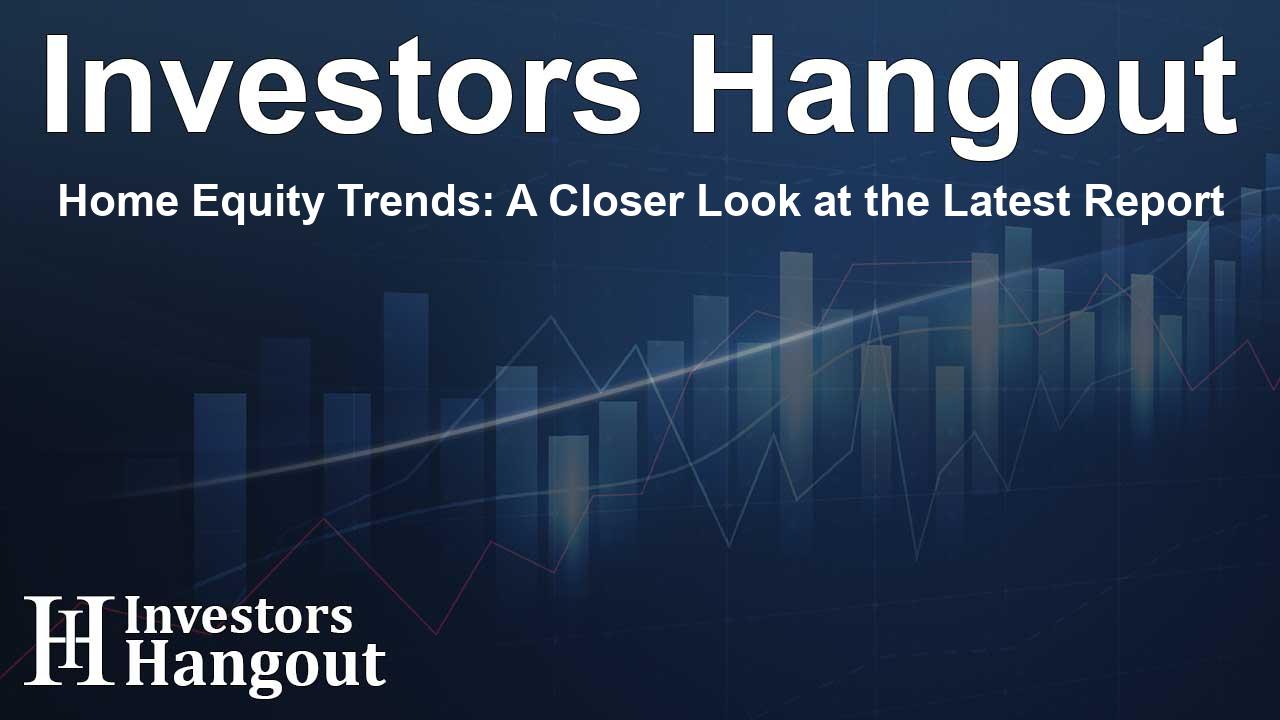Home Equity Trends: A Closer Look at the Latest Report

Latest Trends in Home Equity
The world of home equity has been quite fascinating as we observe the shifting landscape. Recent reports indicate that the proportion of homes classified as equity-rich has seen a slight decline in the most recent quarter. Specifically, 46.2 percent of mortgaged residential properties now fall into this category, which signifies that the combined estimated loan balances on these properties are less than half of their estimated market value.
Understanding Equity-Rich Homes
This figure shows a decrease from 47.7 percent in the previous quarter, continuing a trend that began when the number peaked at 49.2 percent last year. It's worth noting that this current rate is still historically high, especially when compared to just a few years ago, where the percentage of equity-rich homes was markedly lower. The trend of increasing home values has contributed to these figures, allowing many homeowners to build substantial equity in their homes.
The Landscape Across States
The decline in equity-rich homes is not uniform across the nation. Data reveals significant decreases in many states, with 47 states and the District of Columbia showing a drop over the quarter. However, an annual comparison indicates that 33 states, along with D.C., still report higher equity-rich rates than they did a year ago.
Insights from Industry Leaders
Rob Barber, the CEO of ATTOM, expresses optimism regarding these figures. According to Barber, the dip in equity-rich homes doesn't raise immediate concerns, highlighting that historically this first quarter tends to be the lowest point every year before the rates climb back up in subsequent quarters. This cyclical pattern leads many to anticipate a rebound as warmer months approach.
Rate of Seriously Underwater Homes
Meanwhile, the rate of seriously underwater homes has risen slightly to 2.8 percent, up from 2.5 percent in the previous quarter. This term refers to properties where the loan balances exceed the estimated market values by at least 25 percent. Fortunately, despite this uptick, the percentage remains significantly lower than in early 2020 when it stood at 6.6 percent.
Annual Comparisons and Trends
A closer look at state-by-state performance illustrates the complexities of these trends. For example, Kansas saw a notable increase in seriously underwater homes, suggesting that while national averages have improved, there are pockets of concern that require attention. The comparative analysis underlines that although some states struggle, others continue to thrive.
Regional Insights and Market Performance
When examining equity-rich rates, regions such as the Northeast and West showcase some of the highest percentages of equity-rich mortgage holders. For instance, Vermont, a state renowned for its picturesque landscapes, leads with 85.8 percent equity-rich homes, followed by New Hampshire at 60.5 percent. The real estate landscape continues to exhibit variation, with some markets bustling while others grapple with underwater properties.
Metro Areas and County Performances
Among metropolitan areas with populations exceeding half a million, San Jose, Los Angeles, and San Diego are highlighted for having the highest rates of equity-rich homes. These cities exemplify the robust housing market trends observed in desirable regions. As anticipated, the majority of large markets experienced a decrease in equity-rich properties from the previous quarter, posed as a reminder of the market's volatility.
Proportions of Seriously Underwater Homes
Focusing on areas with high underwater rates, we now see that Louisiana and Kentucky lead in terms of the percentage of seriously underwater homes. This statistical insight reflects the challenges these markets face, making it crucial for homeowners and potential buyers to stay informed and prepared.
Defining Home Equity Terms
To frame our understanding adequately, we define key terms: "equity-rich" describes properties where the loan-to-value ratio is 50 percent or lower, while properties considered "seriously underwater" are those with a loan-to-value ratio of 125 percent or higher. Comprehending these definitions is vital as they underpin the discussion surrounding property ownership stability.
Conclusion
As we move forward, keeping an eye on these trends will be essential for both homeowners and industry stakeholders. Home equity continues to serve as a vital indicator of economic health in the housing market. Although fluctuations occur, the broad patterns suggest resilience and a potential for recovery in the upcoming quarters. Moving into the spring season, many anticipate improvements in home values, which may reverse the current trends.
Frequently Asked Questions
What is the current percentage of equity-rich homes?
As of the latest report, 46.2 percent of mortgaged residential properties are classified as equity-rich, indicating strong home equity across many homeowners.
How does the rate of underwater homes compare now to previous years?
Currently, the underwater home rate stands at 2.8 percent, significantly lower than during the peak of the pandemic when it reached over 6 percent.
What areas in the U.S. have the highest equity-rich rates?
Regions such as Vermont and New Hampshire lead the percentages of equity-rich homes, showcasing a healthy housing market in these states.
What key factors affect home equity trends?
Factors include local market conditions, home price appreciation, economic influences, and the ratio of loan balances to property values.
What can homeowners do to maintain their equity-rich status?
Homeowners should focus on making mortgage payments on time, investing in property maintenance, and considering refinancing to improve their loan-to-value ratio.
About The Author
Contact Caleb Price privately here. Or send an email with ATTN: Caleb Price as the subject to contact@investorshangout.com.
About Investors Hangout
Investors Hangout is a leading online stock forum for financial discussion and learning, offering a wide range of free tools and resources. It draws in traders of all levels, who exchange market knowledge, investigate trading tactics, and keep an eye on industry developments in real time. Featuring financial articles, stock message boards, quotes, charts, company profiles, and live news updates. Through cooperative learning and a wealth of informational resources, it helps users from novices creating their first portfolios to experts honing their techniques. Join Investors Hangout today: https://investorshangout.com/
The content of this article is based on factual, publicly available information and does not represent legal, financial, or investment advice. Investors Hangout does not offer financial advice, and the author is not a licensed financial advisor. Consult a qualified advisor before making any financial or investment decisions based on this article. This article should not be considered advice to purchase, sell, or hold any securities or other investments. If any of the material provided here is inaccurate, please contact us for corrections.
